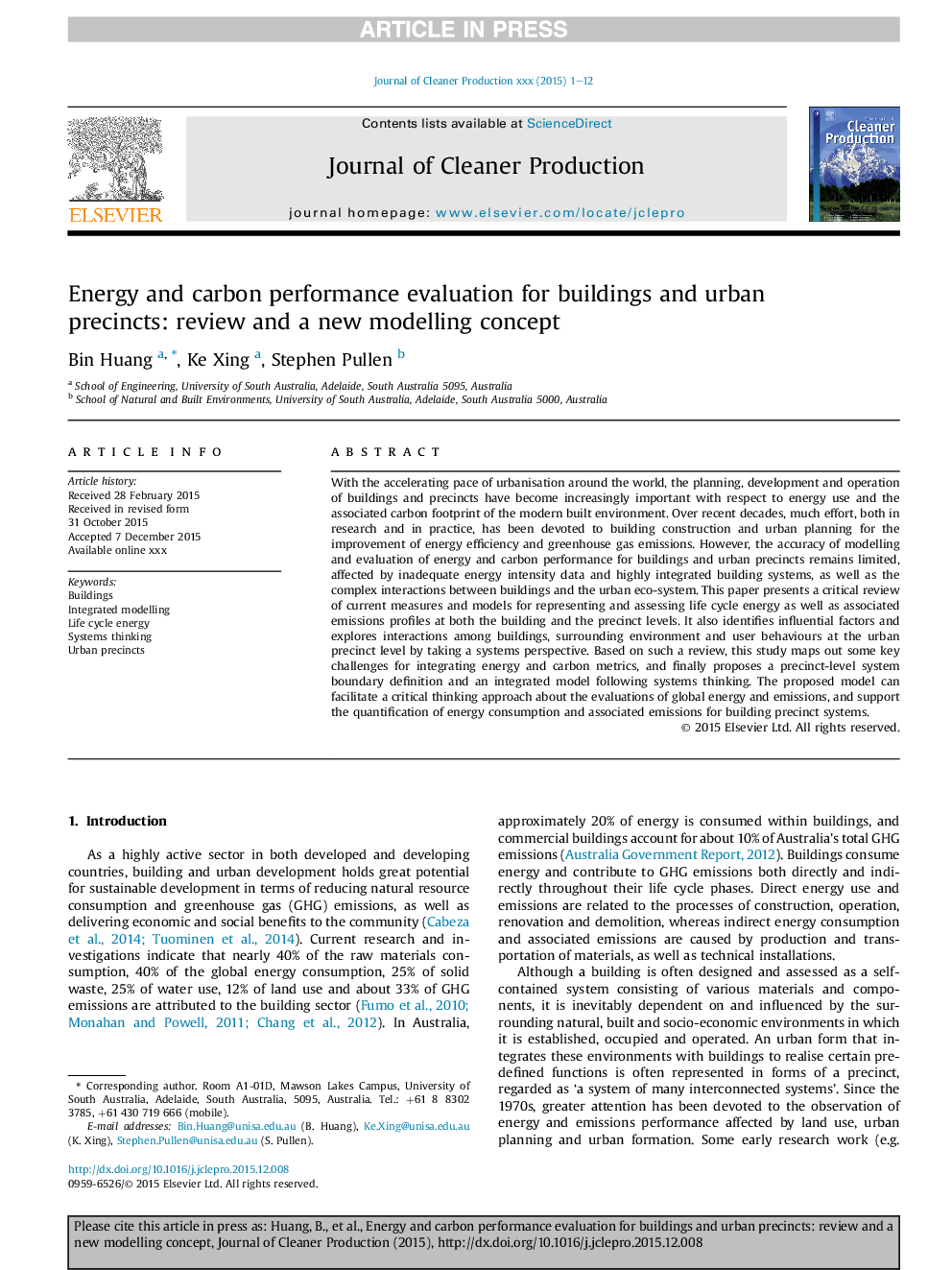| کد مقاله | کد نشریه | سال انتشار | مقاله انگلیسی | نسخه تمام متن |
|---|---|---|---|---|
| 5479544 | 1522091 | 2017 | 12 صفحه PDF | دانلود رایگان |
عنوان انگلیسی مقاله ISI
Energy and carbon performance evaluation for buildings and urban precincts: review and a new modelling concept
ترجمه فارسی عنوان
ارزیابی انرژی و کربن برای ساختمان ها و شهرداری ها: بررسی و مفهوم مدل سازی جدید
دانلود مقاله + سفارش ترجمه
دانلود مقاله ISI انگلیسی
رایگان برای ایرانیان
کلمات کلیدی
ساختمان ها، مدل سازی یکپارچه، انرژی چرخه زندگی تفکر سیستمی، شهرداری
ترجمه چکیده
با سرعت شتاب دهی شهرنشینی در سرتاسر جهان، برنامه ریزی، توسعه و بهره برداری از ساختمان ها و محوطه ها به طور فزاینده ای با توجه به استفاده از انرژی و پدیده کربن مرتبط با محیط زیست مدرن تبدیل شده است. در دهه های اخیر، تلاش های زیادی در زمینه تحقیقات و عملی در زمینه ساخت و ساز و برنامه ریزی شهری برای بهبود بهره وری انرژی و انتشار گازهای گلخانه ای اختصاص داده شده است. با این حال، دقت مدل سازی و ارزیابی عملکرد انرژی و کربن برای ساختمان ها و محوطه های شهری همچنان محدود است، که تحت تاثیر داده های شدت انرژی نامناسب و سیستم های ساختمان بسیار مجتمع، و همچنین تعاملات پیچیده بین ساختمان ها و سیستم اکوسیستم شهری است. این مقاله نقد انتقادی از اقدامات و مدل های فعلی برای ارائه و ارزیابی انرژی چرخه حیات و همچنین نمایه های مربوط به انتشار در هر دو ساختمان و محوطه را ارائه می دهد. همچنین با در نظر گرفتن دیدگاه های سیستم، عوامل موثر را شناسایی می کند و ارتباطات بین ساختمان ها، محیط اطراف و رفتارهای کاربر در سطح شهری را بررسی می کند. بر اساس چنین بررسی، این مطالعه بر روی برخی از چالش های کلیدی برای ادغام اندازه گیری های انرژی و کربن، و در نهایت، پیشنهاد می کند که تعریف مرزی سیستم در سطح مقر و یک مدل یکپارچه در پی تفکر سیستم را پیشنهاد کند. مدل پیشنهادی می تواند یک رویکرد تفکر انتقادی در مورد ارزیابی های انرژی و انتشار گازهای گلخانه ای را تسهیل کند و از اندازه گیری مصرف انرژی و انتشار گازهای مرتبط با آن برای ساختن سیستم های مستحکم حمایت کند.
موضوعات مرتبط
مهندسی و علوم پایه
مهندسی انرژی
انرژی های تجدید پذیر، توسعه پایدار و محیط زیست
چکیده انگلیسی
With the accelerating pace of urbanisation around the world, the planning, development and operation of buildings and precincts have become increasingly important with respect to energy use and the associated carbon footprint of the modern built environment. Over recent decades, much effort, both in research and in practice, has been devoted to building construction and urban planning for the improvement of energy efficiency and greenhouse gas emissions. However, the accuracy of modelling and evaluation of energy and carbon performance for buildings and urban precincts remains limited, affected by inadequate energy intensity data and highly integrated building systems, as well as the complex interactions between buildings and the urban eco-system. This paper presents a critical review of current measures and models for representing and assessing life cycle energy as well as associated emissions profiles at both the building and the precinct levels. It also identifies influential factors and explores interactions among buildings, surrounding environment and user behaviours at the urban precinct level by taking a systems perspective. Based on such a review, this study maps out some key challenges for integrating energy and carbon metrics, and finally proposes a precinct-level system boundary definition and an integrated model following systems thinking. The proposed model can facilitate a critical thinking approach about the evaluations of global energy and emissions, and support the quantification of energy consumption and associated emissions for building precinct systems.
ناشر
Database: Elsevier - ScienceDirect (ساینس دایرکت)
Journal: Journal of Cleaner Production - Volume 163, 1 October 2017, Pages 24-35
Journal: Journal of Cleaner Production - Volume 163, 1 October 2017, Pages 24-35
نویسندگان
Bin Huang, Ke Xing, Stephen Pullen,
